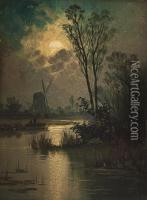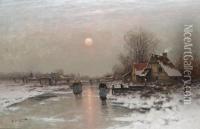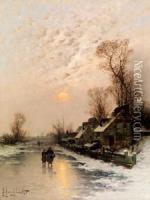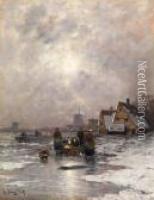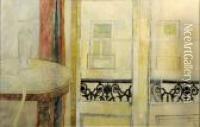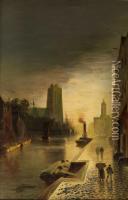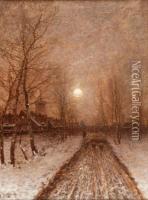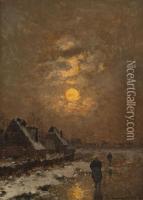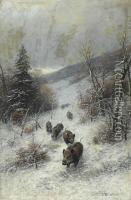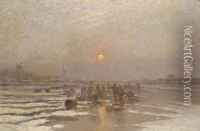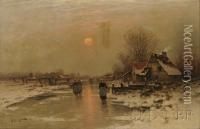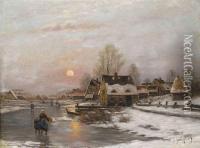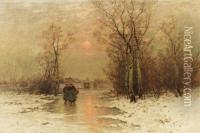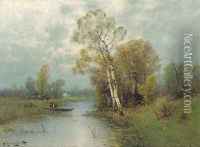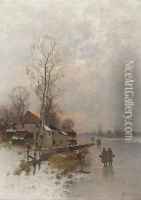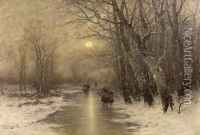Johann Jungblutt Paintings
Johann Jungblutt was a German landscape painter born on February 8, 1860, in Eschweiler in the Rhineland. He showed an early affinity for the arts and was particularly drawn to painting landscapes, which would become his primary genre. Jungblutt's work is characterized by its focus on natural beauty, often depicting serene winter scenes and snow-covered villages that evoke a sense of peace and tranquility.
Jungblutt's training in art began in Düsseldorf, a city renowned for its art academy and a hub for aspiring artists in the 19th century. There, he honed his skills and developed a style that was influenced by the Düsseldorf school of painting, known for its meticulous attention to detail and realistic portrayal of nature.
Throughout his career, Jungblutt traveled extensively across Europe, drawing inspiration from various landscapes. His travels took him to the Netherlands and Norway, among other places, where he captured the unique qualities of the light and terrain in his paintings. His winter landscapes, in particular, garnered attention for their atmospheric quality and the way they conveyed the quietness and isolation of snowy environments.
Despite his talent and the beauty of his work, Johann Jungblutt did not achieve widespread recognition during his lifetime. However, his paintings have since gained appreciation among collectors and art enthusiasts who value the serene and contemplative qualities of his winter scenes.
Jungblutt's life was cut short when he passed away on December 21, 1912, in Düsseldorf. His legacy lives on through his evocative landscapes, which continue to be admired for their technical skill and emotional depth. Johann Jungblutt's contribution to the genre of landscape painting remains a testament to his passion for the natural world and his ability to capture its essence on canvas.
